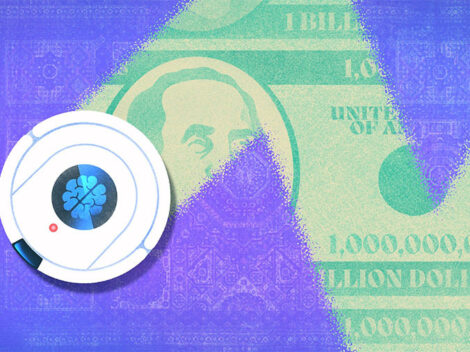Yesterday, Hive announced a $10.6 million Series A round of capital, led by Comcast Ventures. The new round was larger than all the capital that Hive, a startup focused on a unified productivity service, had raised prior, including a $4 million Series A led by Vocap Investment Partners in 2017 and a $1.4 million round led by Tribeca Venture Partners in 2016.
Subscribe to the Crunchbase Daily
Why are we a day late to this story? Because I forgot that yesterday was Tuesday when reading my embargo notes thanks to the holiday. But! Despite being late to the news, I found the company pretty interesting after yammering to Hive founder John Furneaux last week so let’s talk about it.
What’s Hive?
Hive is a New York-based software company focused on worker productivity.
But it’s not a Slack clone. Instead, Hive bakes a number of different tools and services into a single package. Hive features, for example, “Project Layouts” that feel similar in form to how Airtable details information in various formats. It has a to-do list function (RIP Wunderlist). It also includes chat functionality and Zoom video calls. You can also take notes inside of Hive, and send email.
If that sounds like a lot, to some degree it is. But in Furneaux’s view, it’s better to provide a more complete toolset than to sell a product that only completes one element of a user’s productivity flow. “If you are brave, you want to cover the user journey,” he told Crunchbase News. That means that if a user needs to complete a task, Hive wants to provide all the tools they need from start to finish. The company doesn’t want you to use Hive and another tool to get something done.
After talking to Furneaux about where Hive fits into the market, I was curious if building the product felt like constructing an operating system. As it turns out, Furneaux told Crunchbase News, the company once considered calling the service HiveOS.
One final note about Hive the product. The small company which has raised more than $16 million to date isn’t trying to build a better Evernote and a better Slack and a better Airtable and a better Monday.com. Instead, it wants to “win the user journey” according to Furneaux, while not trying to copy every power-feature of the underlying pieces it’s stitching together.
Furneaux gave the example of Evernote, a product with myriad features that befit its age. Hive, instead, wants to give you enough Evernote-like functionality to take solid notes, but not more.
What’s fun about Hive is that it feels almost old-school. The company isn’t building a single slick tool that it can go thrash about the market with yet another enterprise sales team. Instead, it’s building a coven of interconnected tools that hopefully work in concert, allowing workers to stick inside of one app instead of using 47.
Now the question we care more about here at Crunchbase News: Is the model working, and, if so, how well?
Growth
According to Hive’s release, “in the last year alone, the company quintupled [its] revenue.” Happily for us, Furneaux provided a little more context during our call. Hive had a “smidgen” under $1 million in ARR at the start of the year according to the founder. So, five times that would put Hive at around $5 million ARR today.
In terms of venture norms, that’s a very solid growth rate. Powering it is a non-freemium model; Hive has a trial, but no free tier. The lack of a free tier isn’t a handicap it seems, as according to Furneaux, Hive’s trial draws in thousands of potential new paying users each month. The company also has an upsell feature similar to what Dropbox made famous, bringing its product into companies by their employees using it for their own work.
Right, so: With 5x yearly ARR growth, the ability to accrete new users without a free tier, why did Hive only raise $10.6 million, and why did it raise from Comcast Ventures?
The Round
Hive’s Furneaux told Crunchbase News that the company only raised $10.6 million as it wanted to raise as much as it could deploy in 12 months. Why? Because equity capital is expensive, and Hive would rather raise more later when it can do so at a higher valuation.
Finally, why Comcast Ventures. Sure, Hive isn’t based in San Francisco but surely the company could have raised from a better-known VC? Furneaux’s take on the choice was actually a bit surprising. Instead of optimizing for, say, the name-brand-ness of its Series A investor, it picked Comcast Ventures because it is a customer and has “real relationships to real companies.” According to Furneaux, Hive wants to sell to “everyone in Chicago,” and “everyone in the middle of the country.”
“We sell software to the 99 percent,” he said.
That’s enough for today. More when we get another ARR figure out of the company, probably when it hits $10 million which should take place in Q2 2020 if all things go well.
Illustration: Li-Anne Dias.

Stay up to date with recent funding rounds, acquisitions, and more with the Crunchbase Daily.






![Illustration of a guy watering plants with a blocked hose - Global [Dom Guzman]](https://news.crunchbase.com/wp-content/uploads/quarterly-global-3-300x168.jpg)
67.1K Followers